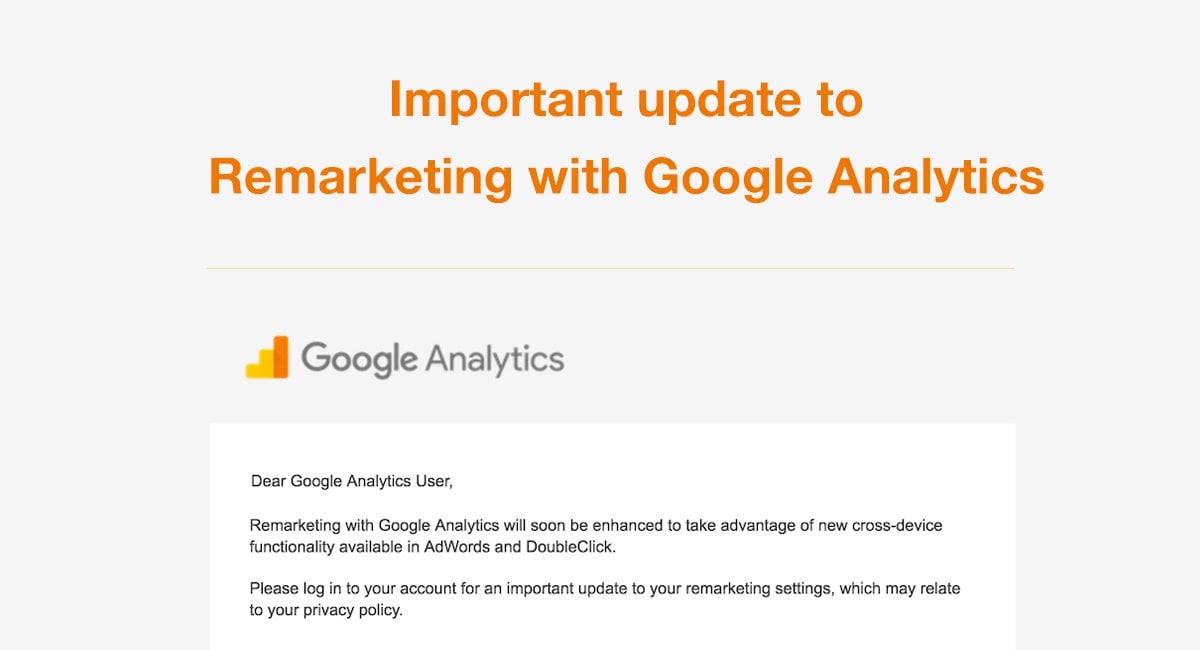Utilizing Remarketing in Google Analytics: A Comprehensive Overview
Utilizing remarketing in Google Analytics provides companies a critical edge in getting to out to prospective customers. This overview will certainly shed light on the vital steps entailed in using the complete capacity of remarketing in Google Analytics, leading to boosted advertising outcomes.
Understanding Remarketing in Google Analytics
Remarketing in Google Analytics enables organizations to strategically target users who have formerly engaged with their web site or mobile app. By leveraging data from Google Analytics, services can produce personalized remarketing lists based on user behavior, such as pages seen, actions taken, or particular goals accomplished. This effective tool enables companies to re-engage with individuals that have shown interest in their services or products, inevitably increasing the chance of conversion.
Understanding the various sorts of remarketing techniques is vital for a successful campaign - What Is “Remarketing” In Google Analytics?. Google Analytics offers numerous choices, including common remarketing, vibrant remarketing, and remarketing checklists for search ads (RLSA) Each type offers an one-of-a-kind function and can be customized to satisfy particular advertising goals
Furthermore, assessing the performance of remarketing campaigns is vital for enhancing outcomes. Google Analytics offers useful understandings right into the performance of various remarketing methods, enabling businesses to make data-driven decisions and fine-tune their targeting approach. By continuously adjusting and monitoring remarketing efforts based on analytics data, companies can optimize ROI and drive success in their advertising and marketing efforts.
Establishing Remarketing Campaigns

After establishing audience listings, the next step is to connect Google Analytics with Google Advertisements. By linking these 2 systems, services can flawlessly move audience lists from Google Analytics to Google Advertisements for remarketing purposes. This combination enables even more specific targeting and better campaign performance.
Once the accounts are connected, organizations can develop remarketing projects in Google Ads using the audience details formerly defined in Google Analytics. These projects can be customized with details ad creatives, messaging, and bidding techniques to effectively re-engage with previous visitors and drive conversions. By following these steps, businesses can take advantage of the power of remarketing to improve their marketing initiatives and enhance ROI.
Utilizing Audience Division Techniques

Predefined sections in Google Analytics allow you to swiftly evaluate usual target market classifications like new users, returning users, or users that finished a specific goal Find Out More on your site. Custom-made sectors, on the other hand, allow you to develop distinct sections based upon particular criteria that are important to your company objectives. Dynamic remarketing listings automatically change based on individual actions, showing customized advertisements to individuals who have engaged with your website specifically ways.
Analyzing Remarketing Performance Metrics
Upon examining the efficiency of remarketing projects in Google Analytics, the evaluation of vital efficiency metrics gives beneficial understandings right into target market engagement and conversion prices. By diving right into metrics such as click-through prices (CTR), conversion prices, price per procurement (CERTIFIED PUBLIC ACCOUNTANT), and return on advertisement invest (ROAS), marketers can evaluate the success of their remarketing efforts. CTR indicates the percentage of users who clicked the advertisement after watching it, mirroring the advertisement's importance and charm. Conversion rates measure the percentage of users that finished a preferred action, such as making a purchase, after clicking on the advertisement. CPA reveals the average cost sustained for each and every conversion, assisting evaluate campaign profitability. ROAS, on the various other hand, measures the income generated for every buck invested in marketing. Analyzing these metrics enables marketers to maximize projects, refine target website link market targeting, and click for more designate budgets properly to improve overall remarketing efficiency.
Maximizing Remarketing Methods
When refining remarketing approaches in Google Analytics, concentrating on audience division is critical for accomplishing campaign success. By separating your target market into specific sectors based on their actions, demographics, or rate of interests, you can customize your ads better to each team. This targeted technique enhances the probability of involving customers who have currently shown interest in your services or items, leading to greater conversion prices.
One more essential element of optimizing remarketing techniques is continuously screening and refining your projects (What Is “Remarketing” In Google Analytics?). A/B screening various advertisement creatives, messaging, or deals can assist you determine what reverberates ideal with your target market and drives the most conversions. By examining the efficiency of these examinations in Google Analytics, you can make data-driven choices to maximize your remarketing initiatives further
Additionally, leveraging dynamic remarketing can substantially boost your project results. This attribute permits you to reveal personalized ads to users based upon their past communications with your internet site, showcasing solutions or items they have previously seen. By delivering tailored material to users based on their actions and passions, vibrant remarketing can assist enhance interaction and drive conversions.
Final Thought
In conclusion, harnessing remarketing in Google Analytics is a strategic strategy to target customers who have formerly engaged with a website. By producing personalized audience lists and using audience division techniques, companies can optimize remarketing projects for enhanced conversion rates. Assessing performance metrics and continually enhancing techniques are crucial for optimizing the effectiveness of remarketing initiatives.
Google Analytics offers different choices, including typical remarketing, vibrant remarketing, and remarketing listings for search advertisements (RLSA)After setting up audience checklists, the following action is to link Google Analytics with Google Ads. By linking these two systems, services can seamlessly move audience lists from Google Analytics to Google Advertisements for remarketing objectives.When the accounts are linked, services can create remarketing campaigns in Google Advertisements using the audience lists previously specified in Google Analytics.When refining remarketing strategies in Google Analytics, focusing on target market segmentation is vital for achieving campaign success.